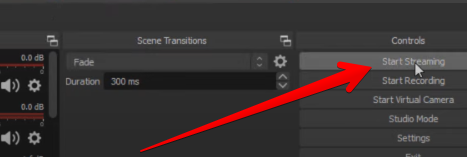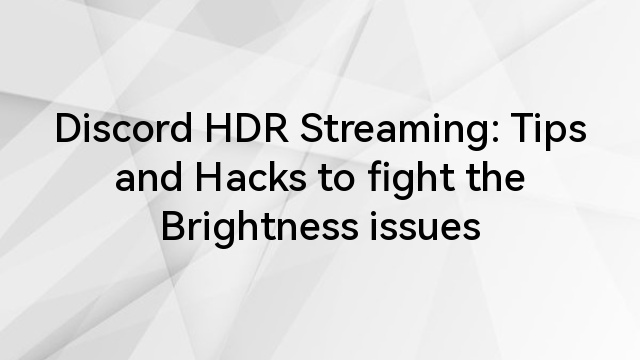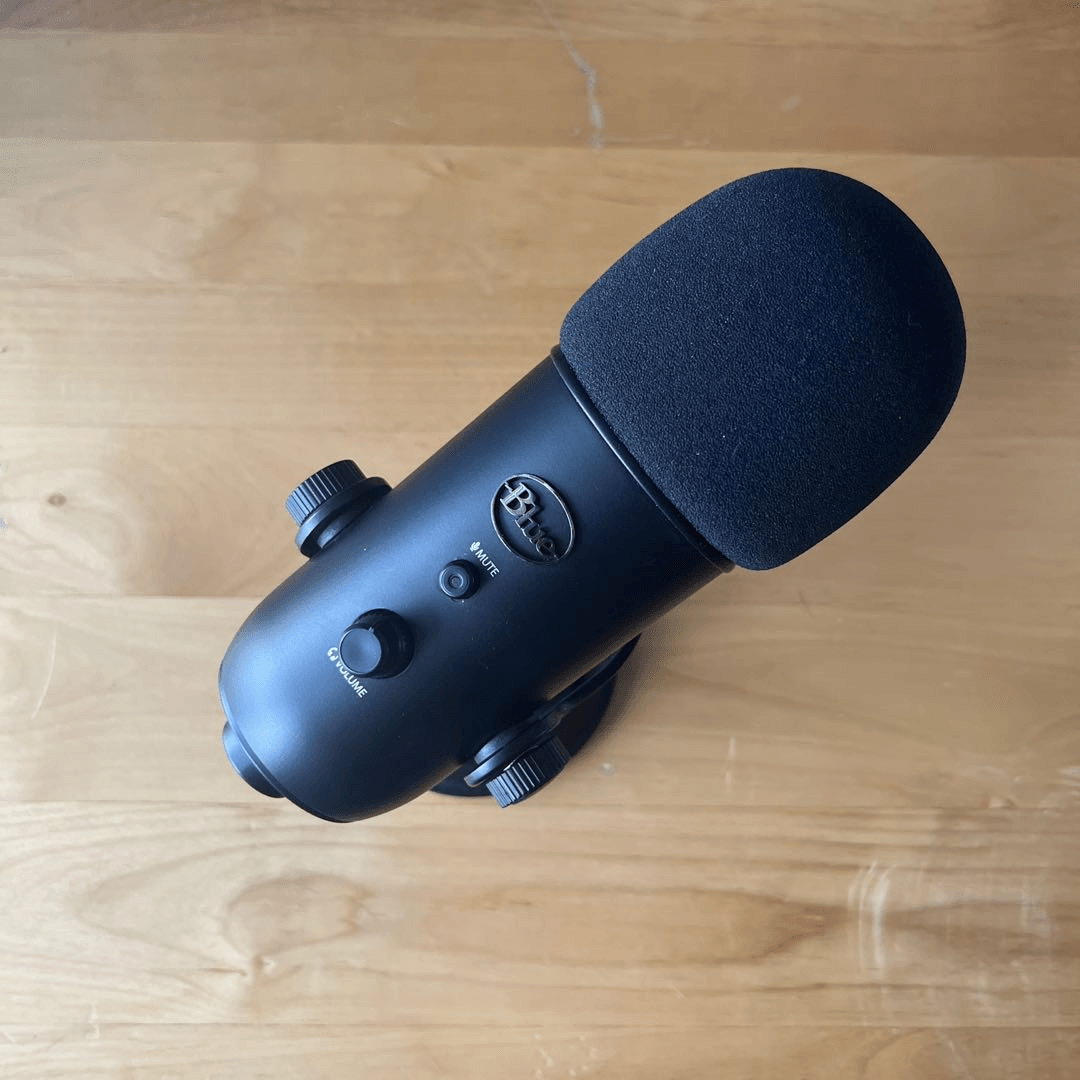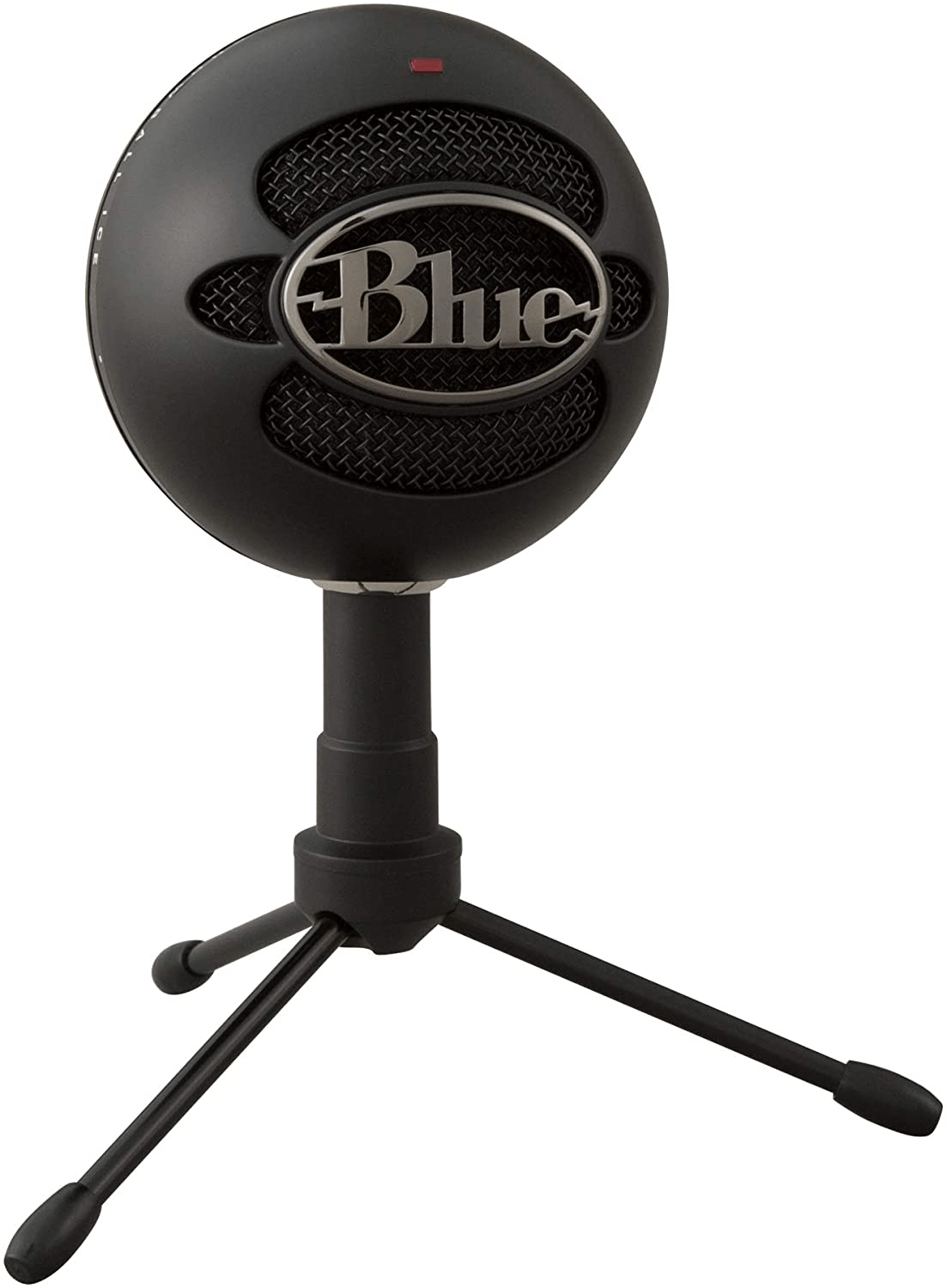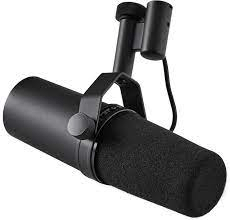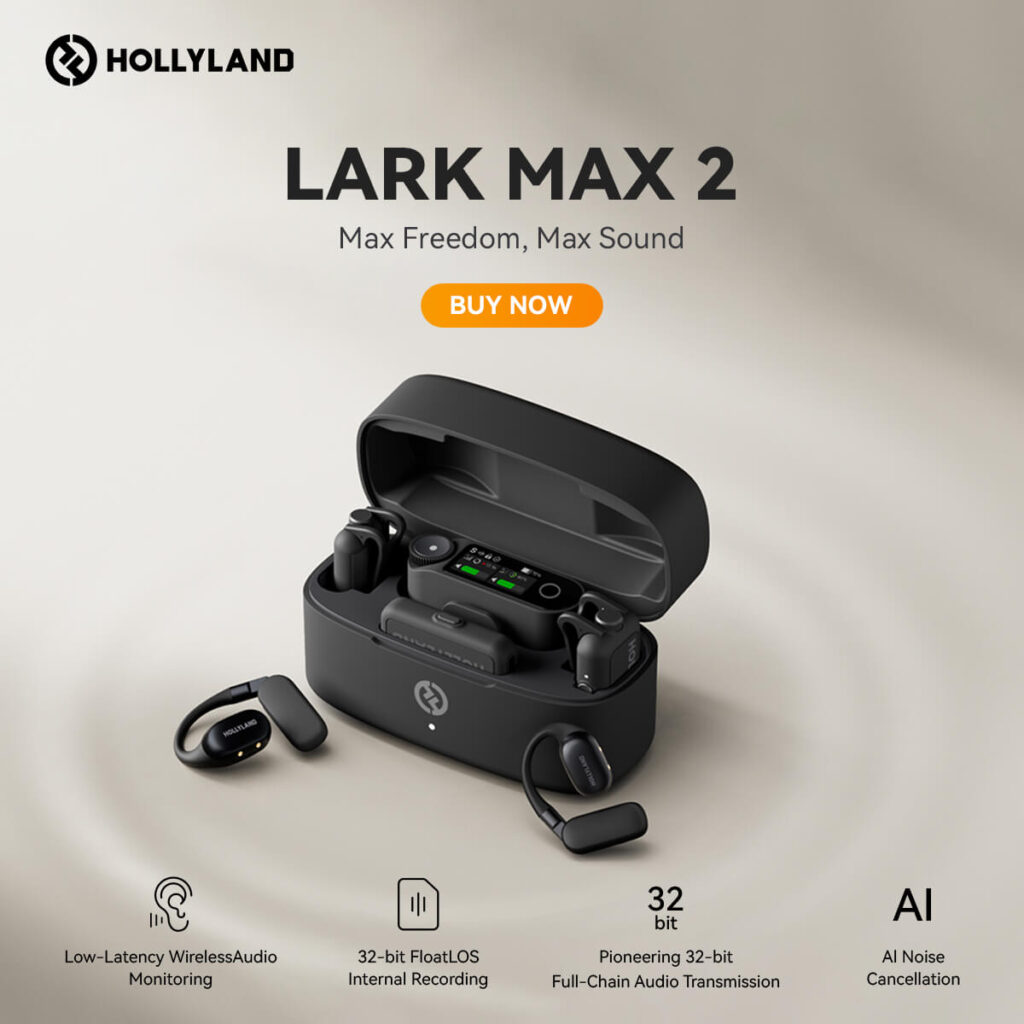Built-in headsets or webcam mics might be fine for casual calls, but they fall short when it comes to professional streaming. If you want your voice to sound clear, rich, and consistent on Twitch, YouTube, or any live platform, a dedicated microphone is essential.
We’ve rounded up the 28 best microphones for streaming in 2025, comparing sound quality, build, connectivity, and price. Whether you’re just starting out or upgrading your setup, this guide will help you find a microphone that suits your voice, environment, and workflow.
Why Trust Us?
This is the official blog of Hollyland, an industry-leading brand in wireless audio. Everything we share here is based on insights from our engineers, audio experts, and real creators. Our recommendations are based on lab tests, hands-on use, and objective comparisons with other top brands, ensuring reliable and honest advice for users.
Top Picks at a Glance
| Model | Type | Connectivity(USB/XLR/etc) | Frequency response | Battery Life | Best For | Price |
| Hollyland LARK MAX 2 | Wireless / Lavalier | USB-C | 20 Hz – 20 kHz | 11 hours | Overall | Not Specified |
| Hollyland LARK A1 | Wireless / Lavalier | USB-C | 20 Hz – 20 kHz | 9 hours | Streaming | $69.90 |
| Hollyland LARK M2S | Wireless / Lavalier | USB-C | 20 Hz – 20 kHz | 9 hours | Conferencing | $112.86 |
| Hollyland LARK M2 | Wireless / Lavalier | USB-C | 20 Hz – 20 kHz | 10 hours | Streaming | $106.00 |
| Hollyland LARK MAX | Wireless / Lavalier | USB-C | 20 Hz – 20 kHz | 7.5 hours | Studio-Grade Quality | Not Specified |
| Razer Seiren Mini | Wired/Condenser | USB-C | 20 Hz – 20 kHz | N/A | Streaming | $36.99 |
| Sennheiser Profile | Wired/Condenser | USB-C | Not Specified | N/A | Streaming | $103.69 |
| HyperX QuadCast S | Wired/Condenser | USB-C | 20 Hz – 20 kHz | N/A | Gaming | $88.04 |
| Shure MV7+ | Wired/Dynamic | USB/XLR | 50 Hz – 16 kHz | N/A | Podcasts | $299.00 |
| DJI Mic Mini | Wireless / Lavalier | USB‑C | 20Hz – 20kHz | 11.5 hours | Portability | $161.00 |
| SteelSeries Alias Pro | Wired/Condenser | USB/XLR | 50 Hz – 20 kHz | N/A | Streaming | $238.85 |
| Samson Q2U | Wired/ Dynamic | USB/XLR | 50 Hz –15 kHz | N/A | Content Creation | $74.99 |
| sE Electronics V7 | Wired/Dynamic | XLR | 40 Hz – 19 kHz | N/A | Live vocals | $122.32 |
| Røde PodMic | Wired/Dynamic | XLR | 50Hz – 15kHz | N/A | Content creation | $99.00 |
| Elgato Wave Neo Wired | Wired/Condenser | USB-C | 20 Hz – 20 kHz | N/A | Streaming | $79.97 |
| Røde NT USB Mini | Wired/Condenser | USB-C | 20 Hz – 20 kHz | N/A | Podcasting | $99.00 |
| HyperX QuadCast | Wired/Condenser | USB-C | 20 Hz – 20 kHz | N/A | YouTubers | $98.99 |
| Elgato Wave:3 | Wired/Condenser | USB-C | 20 HZ – 70kHz | N/A | Podcasting | $149.99 |
| Røde NT-USB Plus | Wired/Conenser | USB-C | 20Hz – 20kHz | N/A | Streaming | $169.00 |
| Shure MV6 | Wired/Dynamic | USB-C | 50Hz – 15kHz | N/A | Content Creation | $169.00 |
| Elgato Wave DX | Wired/Dynamic | XLR | 50Hz – 15kHz | N/A | Content Creation | $99.99 |
| Shure SM7B | Wired/Dynamic | XLR | 50Hz – 20kHz | N/A | Broadcasting | $439.00 |
| Blue Yeti | Wired/Condenser | USB-C | 20 Hz – 20 kHz | N/A | Streaming | $128.99 |
| HyperX SoloCast | Wired/Condenser | USB-C | 20 Hz to 20 kHz | N/A | Streaming | $32.14 |
| Shure SM7dB | Wired/Dynamic | XLR | 50 Hz to 20 kHz | N/A | Broadcasting | $544.00 |
| FIFINE K688 | Wired/Dynamic | USB/XLR | 50 Hz – 15kHz | N/A | Gaming | $72.99 |
| Logitech G Yeti GX | Wired/Dynamic | USB-C | 60Hz – 18.5kHz | N/A | Streaming/Gaming | $139.00 |
| Mini Mic Pro Dual Pros | Wireless/Lavalier | USB-C/Lightning | Not specified | 6 hours | On-the-go presenters | $24.99 |
NOTE: Prices are sourced from Amazon (US) and are subject to change over time.
Best Microphones for Streaming: Detailed Review
Hollyland LARK MAX 2 – Best Overall

Sound pro every time you go live with the LARK MAX 2. It captures your voice in rich 32-bit float at 48 kHz for clear, natural sound. AI noise cancellation keeps background noise out, so your audience hears only you. And with wireless monitoring through Bluetooth earphones, you stay fully tuned in; no cables, no clutter.
Read full Hollyland LARK MAX 2 review for more details.
Specifications:
Polar pattern: Omnidirectional
Frequency response: 20Hz – 20kHz
Max SPL: 128 dB
Connector: USB-C, 3.5mm, UAC
Battery life: 11 hours
Transmission range: 1,115ft (340m)
Pros
- 25ms latency for real-time audio
- Supports up to 4 mics for collabs
- FocalClear tech delivers focused voice capture
- 8GB internal backup recording
Cons
- Wireless may drop without clear line of sight
Suitable for: Podcasters, multi-person interviews, professional filmmakers, live streamers, and high-demand production environments.
Real Review From Amazon: Not specified
Price: Not Specified
Hollyland LARK A1 – Your Pocket-Sized Wireless Mic

Keep your stream sounding sharp with the LARK A1. Its anti-interference tech delivers a rock-solid signal, while adjustable gain lets you dial in the perfect voice level. Auto-Limit Clip Protection handles sudden spikes in volume, keeping your sound smooth, steady, and easy on your audience’s ears.
Read the full Hollyland Lark A1 review for more details.
Specifications:
Polar pattern: Omnidirectional
Frequency response: 20 Hz – 20 kHz
Max SPL: 120 dB
Connector: USB-C, Lightning
Battery life: 54 Hours
Transmission range: 200m
Pros:
- Smart noise cancellation with three levels
- Customizable EQ and reverb modes
- 6-level gain adjustment via app
Cons:
- No onboard recording for backup audio
Suitable for: Streamers, Vloggers, Mobile Creators, YouTube creators, and podcasters.
Real review from Amazon: “As a YouTuber filming daily vlogs and interviews, this mic system has been a total game-changer.” — @Tinazhang591
Price: $69.90
Hollyland LARK M2S – Clear Sound in a Snap

The LARK M2S is so light you’ll barely notice it’s there, and with no visible logos plus a sleek titanium clip, it stays discreet on your shirt or collar. Its advanced anti-interference tech and strong RF resistance keep your stream sounding clean and crisp, even if there’s background noise around you.
Read full Hollyland LARK M2S review for more details.
Specifications:
Polar pattern: Omnidirectional
Frequency response: 20Hz – 20kHz
Max SPL: 116 dB
Connector: USB-C and 3.5mm TRS
Battery life: Approx. 9 hours
Transmission range: 300m (1000ft)
Pros
- Instant auto-pairing from the box
- Seamless playback with receiver connected
- LED charging case shows battery levels
Cons
- Lacks magnetic clip attachment
Suitable for: Streaming, vlogging, podcasting, interviews, YouTube content, mobile creation, educational videos, and fitness-related productions.
Real review from Amazon: “Great set of microphones. Works flawlessly on my iPhone and PC, I also use it for Discord/Gaming.” — @Saeverix
Price: $112.86
Hollyland LARK M2 – Effortless Wireless Audio

The Hollyland LARK M2 brings pro-level clarity to your stream with a 70 dB signal-to-noise ratio for clean and detailed audio. Its 40-hour battery keeps you going through long sessions, and with clip, magnet, or necklace mounting options, it fits your setup without getting in the way.
Read full Hollyland LARK M2 review for more details.
Specifications:
Polar pattern: Omnidirectional
Frequency response: 20Hz – 20kHz
Max SPL: 115 dB
Connector: USB-C, Lightning, and 3.5mm TRS
Battery life: Approx. 10 hours
Transmission range: 300m (1000ft)
Pros:
- ENC tech reduces noise across all frequencies
- Fast 1.5-hour recharge time
- Captures clear audio even from off angles
- Compatible with a lot of devices
Cons:
- No built-in storage for direct recording
Suitable for: Streaming, vlogs, interviews, podcasts, YouTube videos, and daily recordings.
Real review from Amazon: “The Hollyland Lark M2 is a fantastic investment for anyone who wants to improve the audio quality of their videos.” — @Cesar H.
Price: $106.00
Hollyland LARK MAX – Capture Audio Like a Pro

The LARK MAX doubles as a plug-and-play USB microphone, making it perfect for high-quality streaming on your computer. Built-in DSP tech keeps your voice clear and focused, cutting background noise. Plus, Auto Record mode saves backups directly on the transmitter, so you’re covered in case of dropouts or interruptions.
Read full Hollyland LARK MAX review for more details.
Specifications:
Polar pattern: Omnidirectional
Frequency response: 20Hz – 20kHz
Max SPL: 128 dB
Connector: USB-C, 3.5mm TRS, and UAC
Transmission range: Up to 820ft
Pros:
- MaxTimbre technology mic captures clear vocals
- Auto frequency hopping keeps audio stable
- Quick setting adjustments via control knob
- Touchscreen makes control quick and easy
Cons:
- No Bluetooth support
Suitable for: Streaming, daily vlogging, interviews, video recordings, YouTube content, and podcasts.
Real review from Amazon: “A very good mic.Small but filled with useful tools.The setup, the touchscreen, etc, all just ice on the cake.” — @Horvath I.
Price: Not specified
Razer Seiren Mini – Sound That Stands Out

The Seiren Mini is a small, pill-shaped mic designed for streamers who want a tidy setup. Its compact build hides cables easily, while the USB connection makes it ready to use right away. Thanks to its built-in shock mount, it blocks out vibrations from your desk and keyboard, keeping your voice crisp and free from unwanted noise.
Specifications:
Polar Pattern: Super‑cardioid
Frequency Response: 20Hz – 20kHz
Max SPL: 120 dB SPL (THD < 1% at 1 kHz)
Connector: Micro-USB to USB (bus-powered)
Type: Wired / USB condenser microphone
Sensitivity: 17.8 mV/Pa (1kHz)
Pros:
- Ultra-lightweight, fits in the palm of your hand
- No pop filter needed
Cons:
- No headphone jack or physical controls
- Single recording pattern limits flexibility
Suitable For: Streamers, gamers, students, remote workers, podcasters, and content creators.
Real review from Amazon: “It’s small, so it doesn’t take up much space on my desk. The build feels solid, not cheap.” — @Jose Acosta
Price: $39.98
Sennheiser Profile – Speak with Clarity

The Sennheiser Profile is a premium USB streaming mic with a sleek design and solid build. It comes with a desk stand or a sturdy metal boom arm with a C-clamp for flexible mounting. The boom arm does an excellent job minimizing vibrations, even during desk movement or direct taps.
Specifications:
Polar Pattern: Cardioid
Frequency Response: Not specified
Max SPL: 125 dB
Connector: USB‑C
Type: Pre-polarized condenser microphone
Sensitivity: Not specified
Pros:
- Long USB-C cable
- Full set of physical controls
- Integrated cable management on the boom arm
Cons:
- LED doesn’t always warn about clipping
- Limited articulation
Suitable for: Streamers, content creators, podcasters, remote workers, voice-over artists, and educators.
Real review from Amazon: “Good product. Good sound quality as expected. Good price/quality.” — @Christopher Girard
Price: $103.69
HyperX Quadcast S – Dominate Your Stream

The HyperX QuadCast S delivers sharp sound and a stylish design, complemented by vibrant RGB lighting that makes any Twitch or YouTube setup stand out. Behind its sleek grille lies a built-in foam pop filter, which reduces plosives to keep your voice clean and clear.
Specifications:
Polar Pattern: Cardioid, Omnidirectional, Bidirectional, Stereo
Frequency Response: 20 Hz – 20 kHz
Max SPL: Not specified
Connector: USB-C, with a 3.5 mm headphone output
Type: Wired / USB electret condenser microphone
Sensitivity: -36dB (1V/Pa at 1kHz)
Pros:
- Four selectable polar patterns
- Built-in gain control with smooth matte dial
- LED lights turn off when muted
- Customizable RGB effects via NGENUITY software
Cons:
- Not portable
Suitable for: Content creators, live streamers, gaming enthusiasts, podcast hosts, voice artists, and remote professionals.
Real review from Amazon: “This microphone has incredible quality, I recommend it 100%.” — @Norgelis
Price: $88.04
Shure MV7+ – Made for Perfect Podcasts

The Shure MV7+ delivers broadcast-quality audio through both USB-C and XLR, giving streamers flexibility across setups. With a built-in +18 or +28 dB gain boost, it ensures your voice comes through loud and clear, without the need to crank up external settings to get professional-level sound.
Specifications:
Polar Pattern: Cardioid
Frequency Response: 50 Hz – 16 kHz
Max SPL: 128 dB SPL
Connector: USB-C, XLR (3-pin), 3.5 mm headphone jack
Type: Dynamic (moving-coil)
Sensitivity: –55 dBV/Pa at 1 kHz
Pros:
- Digital Popper Stopper cuts plosives
- Use MOTIV Mix app features while tracking raw audio
- Built-in safety backup
Cons:
- No separate gain or volume controls
- Expensive
Suitable for: Streamers, podcast hosts, voice actors, video creators, online teachers, and remote professionals.
Real review from Amazon: “If you want your voice to shine like a star, the Shure MV7 is the perfect microphone for you.” — @Eduardo Renta
Price: $299.00
DJI Mic Mini – Small Size, Powerful Voice

The DJI Mic Mini keeps streaming simple without compromising on quality. It’s designed to stay connected reliably, and its dual-level noise reduction makes sure your voice always comes through clearly. Just tap the denoise button, and background chaos disappears in an instant.
Specifications:
Polar pattern: Omnidirectional
Frequency response: 20Hz – 20kHz
Max SPL: 120 dB
Connector: 3.5mm TRS (via Camera Audio Cable)
Battery life: 11.5 hours
Transmission range: 400m
Pros:
- 5-level gain dial for fast volume control
- Ready to use out of the box
- Ultra-compact and lightweight
Cons:
- No low-latency monitoring
- Receiver sticks out when connected to the phone
Suitable for: Mobile streamers, smartphone videographers, filmmakers, and travel bloggers.
Real review from Amazon: “Great mic for content creators and vloggers! The audio quality is very good, the sound is clear and natural.” — @TD
Price: $161.00
SteelSeries Alias Pro – Best for Studio Quality Sound

The SteelSeries Alias Pro comes with a built-in shock mount that absorbs vibrations, so your recordings stay clean. It connects via USB-C for a quick and stable setup, and there’s an onboard gain dial that lets you adjust your volume instantly while you’re live.
Specifications:
Polar Pattern: Cardioid
Frequency Response: 50 Hz – 20 kHz
Max SPL: 120 dB
Connector: XLR (mic) + USB‑C (Stream Mixer) + 3.5 mm headphone output
Type: Condenser (1″/25 mm ClearCast capsule)
Sensitivity: Not specified
Pros:
- Touch mute button
- Visual indicators for levels and mute
- Tilt-adjustable for better mic positioning
- Sonar software simplifies audio setup
Cons:
- Single-port mixer limits multi-mic use
Suitable for: Streamers, podcasters, gamers, content creators, broadcasters, voiceover artists.
Real review from Amazon: “Absolutely love this mic, easy to set up, performs perfectly how I wanted, really captures my voice well while limiting what all gets caught up with it” — @Sunny Ruth
Price: $238.85
Samson Q2U – Record with Ease

What sets the Samson Q2U apart is its versatile dual USB and XLR connectivity, giving you total flexibility across setups. A built-in on/off switch lets you control both outputs, an underrated essential during live streams. Plus, the dual-color Power/Clip LED provides instant feedback to help you avoid audio clipping on the fly.
Specifications:
Polar Pattern: Cardioid
Frequency Response: 50Hz – 15kHz
Max SPL: 148 dB SPL
Connector: USB-B, XLR
Type: Dynamic
Sensitivity: -54 dBV/Pa
Pros:
- Handles loud sound sources without distortion
- Easy plug-and-play setup
- Simultaneous XLR and USB output support
Cons:
- Picks up plosives easily
- Limited reproduction of high frequencies
Suitable for: Live streamers, podcasters, musicians, and content creators.
Real review from Amazon: “This is a great entry level microphone that can grow with you as you decide if you want to be a more serious podcast person.” — @Little Birdy
Price: $74.99
sE Electronics V7 – Sound That Cuts Through

The sE Electronics V7 packs a punch with its custom aluminum voice coil, giving your vocals a crisp, powerful edge that stands out in any mix. It connects easily with its standard XLR and delivers rock-solid performance every time. Plus, at just over 300 grams, it’s light enough to keep you comfortable through even the longest streams or recordings.
Specifications:
Polar Pattern: Supercardioid
Frequency Response: 40 Hz – 19 kHz
Max SPL: Not specified
Connector: 3‑pin male XLR
Type: Dynamic handheld vocal mic
Sensitivity: 2.0 mV/Pa (–54 dBV)
Pros:
- Built-in shockmount reduces rumble and handling noise
- Internal windscreen controls plosives
- Durable construction built
- Smooth, forgiving sound ramp-up
Cons:
- Capsule variation may require matching for consistency
Suitable for: Live performers, stage vocalists, streamers, podcasters, public speakers, touring musicians, and event hosts.
Real review from Amazon: “Mic has a crisp cut through the mix sound and looks awesome in chrome and red. Bought a red XLR cable to match. Looks great!” — @MICHAELJ MATT
Price: $122.32
Rode PodMic – Broadcast Sound Made Easy

The Rode PodMic gives you that deep, punchy broadcast sound straight away. It has a built-in pop filter and dynamic build that captures that classic radio vibe podcasters go for.
Specifications:
Polar Pattern: Cardioid
Frequency Response: 50Hz – 15kHz
Max SPL: 94dB
Connector: XLR
Type: Dynamic microphone
Sensitivity: -57dBV
Pros:
- Built-in swing clip works with stands and boom arms
- Durable all-metal body
Cons:
- Limited space for XLR connector alignment
- Cannot stand fully vertical due to the design
Suitable for: Podcasters, streamers, voiceover artists, content creators, gamers, and remote professionals.
Real review from Amazon: “The RODE PodMic is an amazing microphone that has completely elevated my podcasting game.” — @Chiaroscuro
Price: $99.00
Elgato Wave Neo – Stream with Clarity

The Elgato Wave Neo is a pill-shaped USB mic that’s perfect for simple streaming. It features a large tap-to-mute button for quick control, and its sturdy stand ensures stability and a professional appearance on camera.
Specifications:
Polar Pattern: Cardioid
Frequency Response: 20 Hz – 20 kHz
Max SPL: 120 dB
Connector: USB-C
Type: Condenser microphone
Sensitivity: -23 dBFS (min gain) / 7 dBFS (max gain)
Pros:
- Quick-touch mute control
- Adjustable desktop stand
- Clear LED indicator for mute status
Cons:
- Mute can be activated accidentally
Suitable for: Streamers, podcasters, gamers, remote workers, content creators, and video callers.
Real review from Amazon: “Overall, yes, I’d highly recommend this mic. In fact, I prefer this over all other mics I’ve had so far. And it is EASILY the best-looking mic available!” — @Jax
Price: $79.97
Røde NT-USB Mini – Sound Better Instantly

The Rode NT-USB Mini is a compact condenser microphone that’s easy to take on the go. It features a built-in swivel mount with full 360-degree rotation for flexible positioning. When approached with the right expectations, it offers solid value for streamers and content creators alike.
Specifications:
Polar Pattern: Cardioid
Frequency Response: 20 Hz – 20 kHz
Max SPL: 121 dB
Connector: USB-C
Type: Condenser microphone
Sensitivity: Not specified
Pros:
- Large front knob for easy headphone volume control
- Rode Connect compatibility
- Magnetic detachable stand
- Boom arm support
Cons:
- No onboard gain control
- Inconsistent plosive rejection
- Monitoring output not accurate
Suitable for: Podcasters, streamers, content creators, online educators, remote teams, interviewers, and YouTubers.
Real review from Amazon: “The sound quality is exactly what I was looking for and it’s been working great for my needs.” — @Kate
Price: $99.00
HyperX QuadCast – Built to Rule Your Stream

The HyperX QuadCast is a USB microphone with a built-in shock mount to reduce vibrations and a tilting stand for flexible positioning. It features a bottom-mounted gain dial, allowing quick sensitivity adjustments without interrupting your stream.
Specifications:
Polar Pattern: Stereo, Omnidirectional, Cardioid, Bidirectional
Frequency Response: 20 Hz – 20 kHz
Max SPL: 121 dB
Connector: USB-C
Type: Electret condenser microphone
Sensitivity: -36dB
Pros:
- Touch-sensitive mute button with LED feedback
- Four selectable polar patterns
- Built-in pop filter
Cons:
- Sensitive to background noise
- Not compatible with Xbox
Suitable for: Streamers, podcasters, educators, remote workers, content creators, vloggers.
Real review from Amazon: “Great mic. Been using it daily for a year or two now and have never had a single problem with it.” — @Chris
Price: $98.99
Elgato Wave:3 – Control Your Sound Easily

Elgato Wave:3 keeps things simple, just plug it in and start recording. The stand sits solid on your desk, and the front dial makes switching volume controls quick and satisfying.
Specifications:
Polar Pattern: Cardioid
Frequency Response: 70 Hz – 20 KHz
Max SPL: 120dB
Connector: USB-C
Type: Electret condenser microphone
Sensitivity: -25dBFS (min gain) | 15dBFS (max gain)
Pros:
- Clipguard prevents audio distortion
- Integrated with WaveLink mixer software
- Sturdy metal stand with rubber grip
Cons:
- Plastic mount feels flimsy
- Less useful for music recording
Suitable for: Streamers, remote workers, YouTubers, podcasters, educators, vloggers, and interviewers.
Real review from Amazon: “It’s really easy to set up and use, and there’s a lot of customization and tinkering you can do with this mic. 100% would buy again!” — @Nessie
Price: $149.99
Røde NT-USB Plus – Record Like a Pro

The RØDE NT-USB+ is a USB-C mic that’s ready to pair straight out of the box. It comes with a 3m USB-C cable for easy positioning, and thanks to its powerful Revolution Preamp™ and high-resolution A/D conversion, your recordings will sound impressively clear and detailed.
Specifications:
Polar Pattern: Cardioid
Frequency Response: 20Hz – 20kHz
Max SPL: 118.0dB
Connector: USB-C
Type: Condenser microphone
Sensitivity: Not specified
Pros:
- Built-in DSP effects via Rode Central
- Zero-latency headphone monitoring
Cons:
- No onboard gain control
- Flimsy desktop stand
Suitable for: Streamers, remote workers, podcasters, YouTubers, online presenters, and educators.
Real review from Amazon: “The sound quality recorded by this mic is fantastic.” — @Yeshua’s Talmidim
Price: $169.00
Shure MV6 – Pro Audio in Your Hands

The Shure MV6 is a dynamic microphone built for clear, focused speech. Its Voice Isolation Technology and excellent rear rejection keep your voice front and center, even in noisy spaces. With up to 8 hours of recording, it’s ideal for long livestreams.
Specifications:
Polar Pattern: Cardioid
Frequency Response: 50Hz – 15kHz
Max SPL: 120 dB
Connector: USB-C
Type: Wired / USB dynamic microphone
Sensitivity: -34.7 dBFS/Pa
Pros:
- Plug-and-play setup
- Solid metal stand with silicone base
- Built-in plosive reducer
- No software required to function
Cons:
- No onboard gain or tone controls
- Mute button is hard to see and easy to trigger
Suitable for: Streamers, gamers, podcasters, online content creators, casual voice-over users, and remote workers.
Real review from Amazon: “The MV6 is an ideal option for beginners or casual users looking for ease of use without compromising sound quality.” — @Gabriel Bracho
Price: $169.00
Elgato Wave DX – Built for True Creators

Elgato Wave DX has a sharp and minimalist design that stands out. The logo can be rotated or removed, and its side mounting always looks good on camera. Built-in anti-distortion tech keeps your voice smooth and steady, even during intense streams.
Specifications:
Polar Pattern: Cardioid
Frequency Response: 50Hz – 15kHz
Max SPL: Not specified
Connector: XLR
Type: Dynamic microphone
Sensitivity: -52 dbV/Pa
Pros:
- Broadcast-quality dynamic sound
- XLR connectivity with upgrade potential
- Compatible with standard mic stands
Cons:
- No onboard controls or gain adjustment
- XLR cable not included
Suitable for: Streamers, remote workers, podcasters, YouTubers, online presenters, and educators.
Real review from Amazon: “An amazing microphone to have, really! It’s what I mean and does fairly well for what you get.” — @Sebastian Oyola
Price: $99.99
Shure SM7B – The Legend of Studio Sound

The Shure SM7B is a studio-grade dynamic microphone with precision tone controls, including switchable bass rolloff and midrange presence boost. A built-in graphic display lets you fine-tune your sound at a glance, delivering unmatched control in a trusted broadcast-ready design.
Specifications:
Polar Pattern: Cardioid
Frequency Response: 50Hz – 20kHz
Max SPL: 180 dB
Connector: XLR
Type: Dynamic microphone
Sensitivity: -59 dBV/Pa
Pros:
- Built-in EQ switches for tone shaping
- Excellent noise rejection
- Internal shock mount and pop filter
- Durable build with integrated yoke mount
Cons:
- Requires a high-gain preamp or activator
- Slightly bulky for smaller setups
Suitable for: Podcasters, vocalists, studio engineers, live streamers, voice-over artists, and instrumental recording professionals.
Real review from Amazon: “The Shure SM7B is hands-down one of the best microphones I’ve ever used.” — @Still Muna
Price: $439.00
Blue Yeti – Your All-in-One Mic

The Blue Yeti is built for streaming, featuring an internal shockmount that reduces desk noise for clearer audio. Onboard gain control lets you fine-tune your input, while Blue VO!CE software adds custom vocal presets and effects to polish your sound in real time.
Specifications:
Polar Pattern: Cardioid, Omnidirectional, Bidirectional, Stereo
Frequency Response: 20 Hz – 20 kHz
Max SPL: 120 dB (THD ≤ 0.5% at 1 kHz)
Connector: USB-A (integrated USB cable) & 3.5 mm headphone jack
Type: USB multi-pattern condenser microphone (3 × 14 mm capsules)
Sensitivity: Not specified
Pros:
- Built-in headphone jack for monitoring
- No software needed
Cons:
- Low mic position on stock stand
- Sensitive to background noise
Suitable for: Streamers, podcasters, musicians, voiceover artists, content creators, and remote professionals.
Real review from Amazon: “The microphone is great quality, its nice and heavy and sturdy and built with good materials.” — @Ramon
Price: $128.99
HyperX SoloCast – Plug In and Play

The HyperX SoloCast is simple yet effective. Its compact USB design uses a cardioid pickup pattern to capture your voice clearly, while the touch-to-mute sensor lets you mute yourself quickly and easily.
Specifications:
Polar Pattern: Cardioid
Frequency Response: 20 Hz – 20 kHz
Max SPL: Not specified
Connector: USB-C
Type: Condenser (14 mm electret)
Sensitivity: –6 dB (1 V/Pa at 1 kHz)
Pros:
- Includes a versatile USB-C to USB-A cable
- Adjustable stand for flexible positioning
- Clear LED indicator
Cons:
- Sensitive to typing and desk vibration
- Lacks onboard controls and extra features
Suitable for: Streamers, gamers, podcasters, remote workers, content creators, and video callers.
Real review from Amazon: “Great microphone with very nice and warm sound.” — @Martin
Price: $32.14
Shure SM7dB – Power Your Voice Instantly

The Shure SM7dB builds on the iconic SM7B, adding a built-in preamp with selectable gain of +18 dB or +28 dB. And with its internal air suspension, you get excellent isolation from mechanical noise.
Specifications:
Polar Pattern: Cardioid
Frequency Response: 50 Hz to 20 kHz
Max SPL: Not specified
Connector: 3 Pin XLR
Type: Dynamic
Sensitivity: -59.0 (Bypass Mode), -41.0 (+18 dB Preamp Mode), -31.0 (+28 dB Preamp Mode)
Pros:
- Switchable bass roll-off and presence boost
- Excellent shielding and noise rejection
- Internal shock isolation and pop filter
Cons:
- Requires phantom power to use the gain boost
- No XLR cable included
Suitable for: Podcasters, streamers, voice-over artists, home studio users, vocalists, audio engineers, broadcasters.
Real review from Amazon: “It has excellent recording quality. It is the same as the Shure Sm7b but with greater practicality and comfort of use.” — @Daniel Torres
Price: $544.00
FIFINE K688 – Broadcast Sound on a Budget

FIFINE K688 makes recording easy with its pro-level sound and simple setup. You get both XLR and USB options for flexibility, plus live monitoring and onboard controls to keep everything smooth and hassle-free.
Specifications:
Polar Pattern: Cardioid
Frequency Response: 50 Hz – 15 kHz
Max SPL: 130 dB
Connector: USB-C/XLR
Type: Dynamic
Sensitivity: -58±3dB
Pros:
- Sturdy metal build
- Smooth plug-and-play setup
Cons:
- Limited low-end frequency response
- Rear-mounted knobs hard to see during use
Suitable for: Podcasters, streamers, vloggers, remote workers, and beginner voiceover artists.
Real review from Amazon: “Very happy with the sound quality I got from this mic recording vocals, the fact that you can use XLR and Type-C is a plus.” — @David erwin
Price: $72.99
Logitech G Yeti GX – Pro Sound for Gamers

The Yeti GX is a USB dynamic mic built for streamers, with onboard noise rejection that cuts out key clicks and background sound. Its custom capsule ensures clear, consistent audio, and LIGHTSYNC RGB adds a sharp visual edge to your setup.
Specifications:
Polar Pattern: Supercardioid
Frequency Response: 60Hz – 18.5kHz
Max SPL: 130 dB
Connector: USB-C
Type: Dynamic
Sensitivity: Not specified
Pros:
- Clean, high-resolution audio (96kHz / 24-bit)
- Smart gain limiter prevents clipping
- Intuitive scroll wheel for gain control
Cons:
- No headphone jack
- Sensitive to desk vibrations without a boom arm
- G Hub software is inconsistent, especially on Mac
Suitable for: Streamers, gamers, podcasters, online presenters, remote workers, and content creators.
Real review from Amazon: “I’m extremely satisfied with this microphone. The sound quality is excellent, capturing clear audio with minimal background noise.” — @Leo
Price: $139.00
Mini Mic Pro Dual Pros – Record Together with Ease
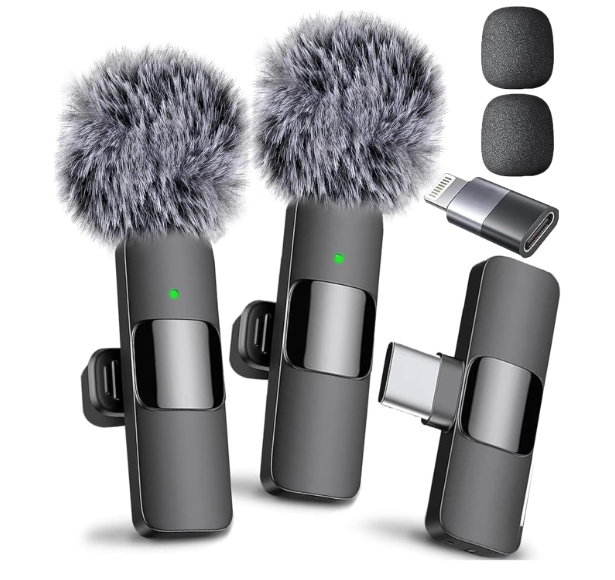
Mini Mic Pro Dual packs punchy audio into a tiny clip-on build. Just plug in and start streaming, which means no setup, no fuss. Wind protection is included to keep your sound sharp, even on the move.
Specifications:
Polar pattern: Omnidirectional
Frequency response: Not specified
Max SPL: Not specified
Connector: USB-C/Lightning
Battery life: 6 hours
Transmission range: Not specified
Pros:
- Visible charge indicators
- Clear audio even at long range
Cons:
- No clear mic monitoring or stereo indication
Suitable for: Content creators, mobile streamers, vloggers, podcasters, interviewers, and on-the-go presenters.
Real review from Amazon: “Very decent mics. Good voice quality. Virtually no setup, plug and play.” — @matt w.
Price: $24.99
Conclusion
Since your mic is often visible on stream, it’s part of your overall presentation, not just your sound. If you want to look and sound more professional, a quality microphone is a solid upgrade.
You don’t need studio gear, but something well-built with clear audio can make a big difference. For casual gaming, that might be overkill, but if you’re serious about streaming, it’s worth it.
FAQs
- What type of mic is best for streaming?
Cardioid condenser microphones are ideal for streaming, thanks to their sensitivity and ability to capture the nuances of your voice.
- What is the best mic gain for streaming?
Aim for an average level between -12 and -20 dB, with peaks no higher than -6 dB to avoid distortion and keep your voice clear.
- Are USB mics good for streaming?
Yes, USB mics are great for streaming; they’re easy to use, sound professional, and don’t require extra gear.





























.png)


